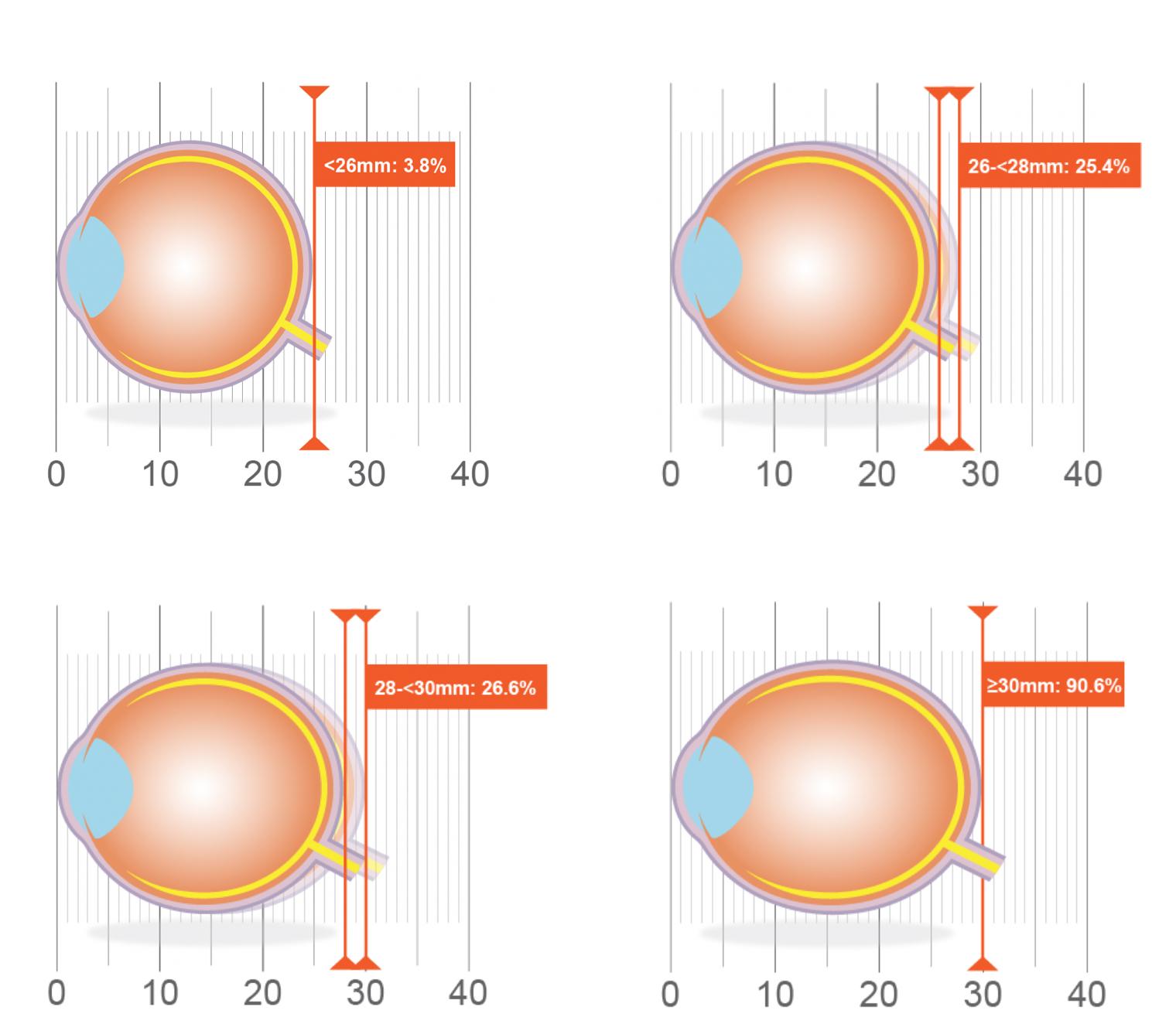Axial Length Estimator
CooperVision’s Axial Length Estimator can be used to help eye care professionals better understand the significance of ocular axial lengths.
CooperVision’s Axial Length Estimator can be used to help eye care professionals better understand the significance of ocular axial lengths.
Clinical studies investigating the effectiveness of a myopia management intervention typically review change in refractive error and axial length over time. Whilst measuring refractive error is a fundamental competency of all optometrists, knowledge of axial length can provide extra clinical information for ECPs interested in myopia management especially since the consequences of myopia- related pathology are significantly linked to axial length (Figure 1.)

What is it?
Axial length is the sum of the anterior chamber depth, lens thickness and vitreous chamber depth.
Current axial length instrumentation is not routinely found in clinical practice so the Axial Length Estimator provides an alternative approach for estimating axial length using standard optometric measurements.
Previous work using data from a large clinical study of myopic children has shown that a good estimate of axial length can be found from corneal radius of curvature readings ‘k-readings’ and refractive error measurement which highly correlates with an R2=0.83.3,4


"The results from the Estimator can be used to help eye care professionals better understand the axial length of the eyes of their patients".

Measuring refractive error and corneal curvature are key competencies in clinical practice
The results from the Estimator can be used to help eye care professionals better understand the axial length of the eyes of their patients. In turn, the results may serve as a useful starting point for discussion with myopic patients or their parents and aid in choosing and describing the best myopia management strategy, including MiSight® 1 day.
The Axial Length Estimator is an educational reference tool for eye care professionals. Eye care professionals may choose to use the estimator in connection with their own patient evaluation but it is not intended to be relied upon for clinical decision making
Click here to see Professor Morgan talk about how the axial length estimator formula was derived
Click here to read more about the axial length estimator
.
- Tideman et al. Association of Axial Length With Risk of Uncorrectable Visual Impairment for Europeans With Myopia. JAMA Ophthalmol. doi:10.1001/jamaophthalmol.2016.4009 Published online October 20, 2016.
- Morgan P et al. Estimation of ocular axial length from conventional optometric measures. Contact Lens and Anterior Eye. https://doi.org/10.1016/j.clae.2019.11.005
- Chamberlain P et al. A 3-year Randomized Clinical Trial of MiSight Lenses for Myopia Control. OVS 2019; 96(8): 556–567
- McCullough S et al. Six Year Refractive Change among White Children and Young Adults: Evidence for Significant Increase in Myopia among White UK Children. 2016. PLoS ONE 11(1): e0146332. doi:10.1371/journal.pone.0146332.
Disclaimer:
The axial length estimator is not intended as and does not constitute medical or optometric advice nor is it intended to replace the patient evaluation performed by an eye care professional.
Launch Axial Length Estimator




